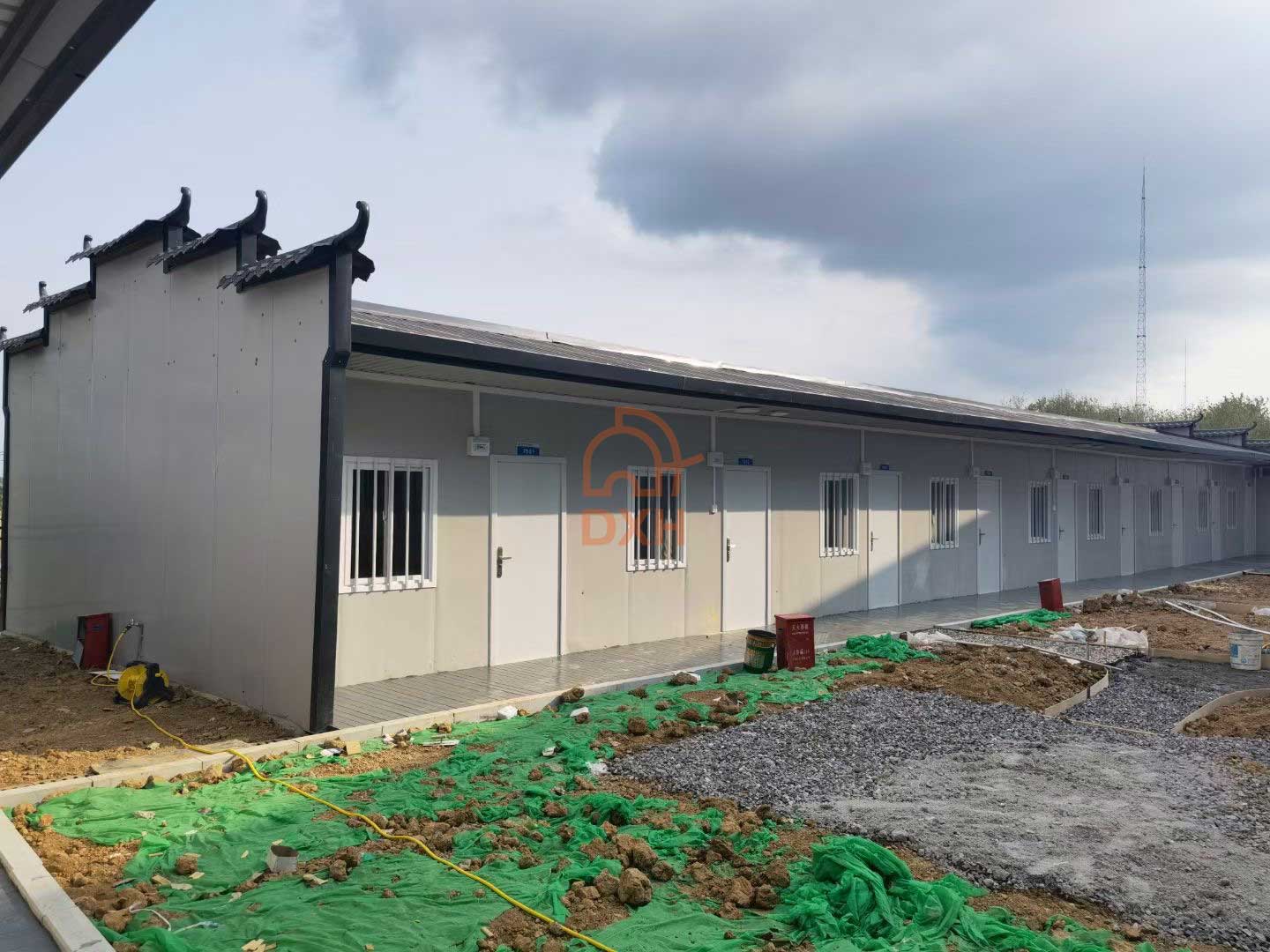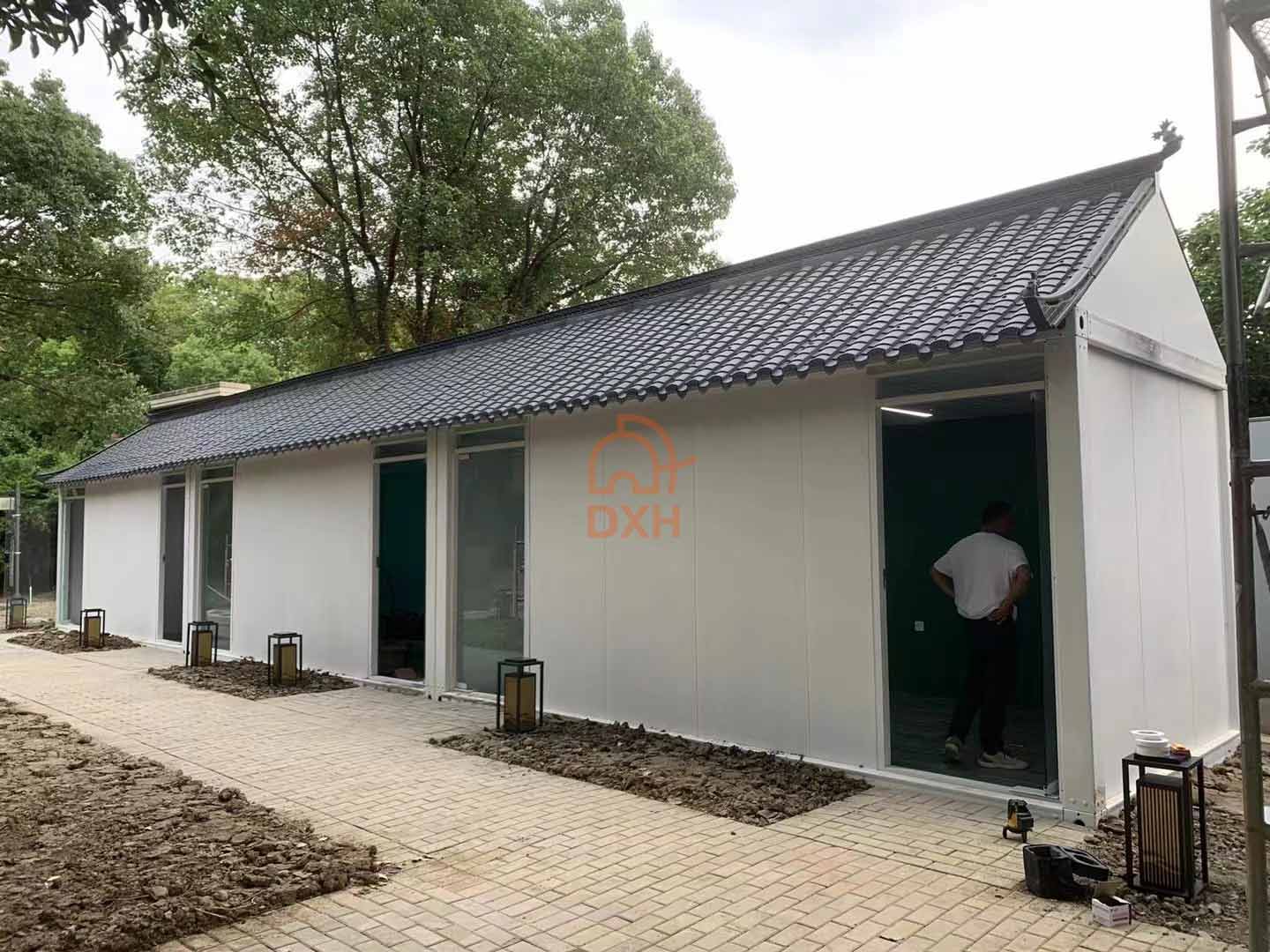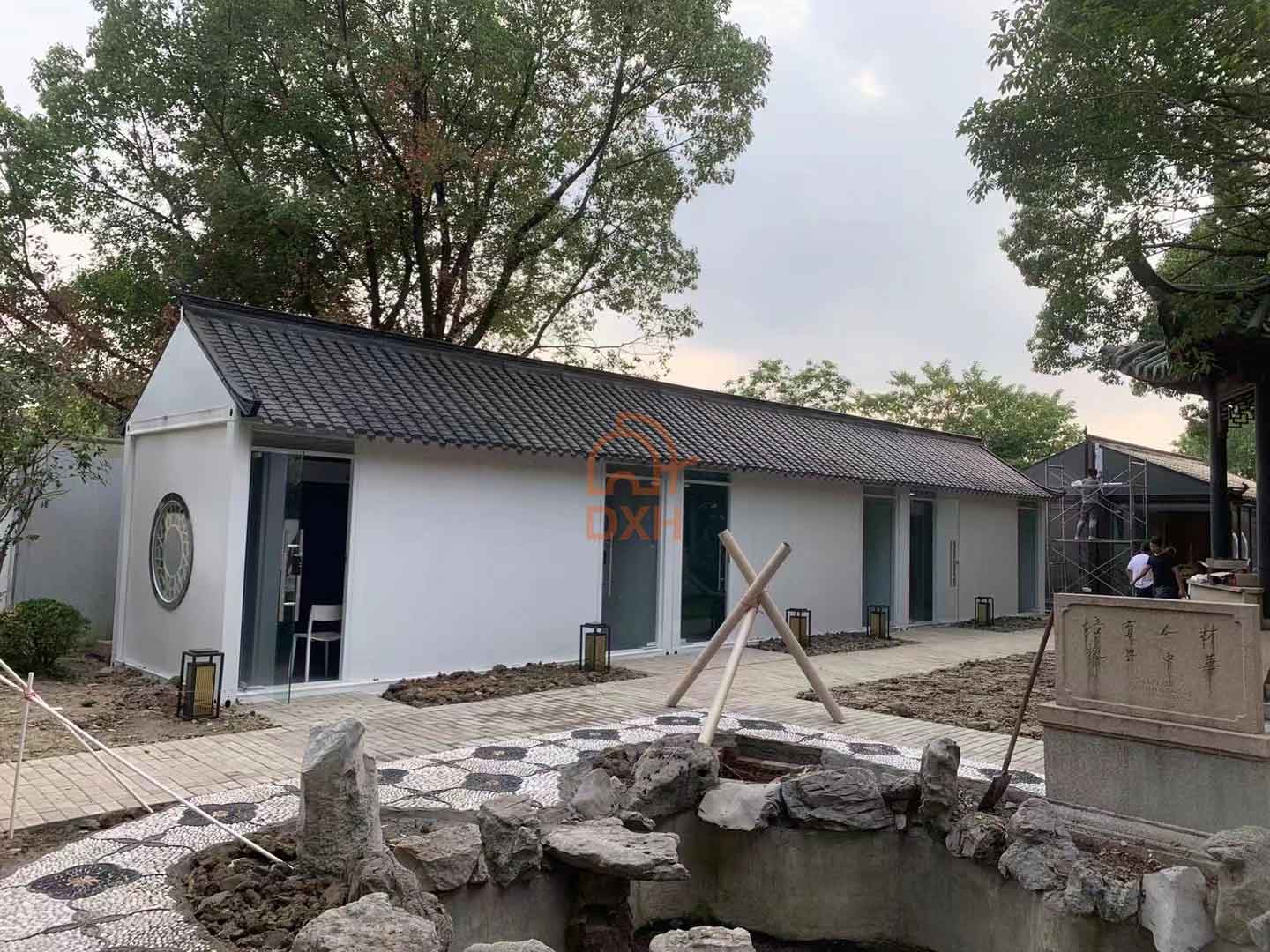Improving the waterproofing performance of prefab houses is essential to ensure the long-term service life and living comfort of the house. Due to the modular construction of prefabricated houses, many components are prefabricated in the factory and transported to the site and assembled, which is more prone to potential water seepage points such as joints and joints than traditional on-site construction. Therefore, effective measures must be taken to improve waterproofing performance during the design and construction process.
1. Choose a material that is waterproof
The waterproofing performance of building materials is the basis for improving the overall waterproofing ability. The waterproof properties of different materials vary greatly, and choosing the right one is crucial.
Choice of waterproofing material:
Waterproof coatings: can be applied to key parts such as walls, floors, and roofs. Common waterproof coatings include polyurethane waterproof coatings, acrylic waterproof coatings, silane/siloxane waterproof coatings, etc. These coatings can form a waterproof membrane during application, effectively preventing moisture from penetrating.
Waterproof membrane materials: such as polymer waterproof membrane, thermoplastic waterproof membrane, etc., especially suitable for roofs, basements and other parts that need to be covered in a large area. The waterproof membrane has good durability and toughness, which can effectively prevent water infiltration.
Waterproof bricks and tiles: In the exterior walls of prefabricated houses and wet areas such as bathrooms and kitchens, bricks and tiles with excellent waterproof properties can be used. The surface of these materials is smooth and does not absorb water, which effectively prevents the ingress of moisture.
Impermeable concrete: In the foundation, exterior wall and other structural parts of the prefabricated house, the use of impermeable concrete can enhance the overall waterproofness of the building. Impermeable concrete prevents moisture from penetrating into the wall through capillary action.
2. Improved seam and interface design
Since the construction of prefabricated houses involves a large number of prefabricated components, joints and joints are the weak links of waterproofing. It is important to strengthen the waterproof design of these areas.
Waterproofing measures for joints:
Sealants and sealing tapes: The use of high-quality sealants (such as silicone sealants, polyurethane sealants, etc.) or waterproof sealing tapes, especially at the joints between components, can effectively prevent moisture penetration. Sealants can be used on joints in walls, roofs, and windows.
Waterproof fittings: At the joints of prefabricated components, plugs or fittings with a waterproof design can be used. These connectors are designed and made of materials that effectively block moisture from entering the structure.
Cross-waterproof layer: At the junction of prefabricated components, a double-layer or staggered waterproof layer is used to increase the reliability of waterproofing. For example, at the junction of the wall and the roof, two different waterproofing layers are used to increase the difficulty of water infiltration.

3. Enhance the waterproofing performance of roofs and foundations
The roof and foundation are the parts of the prefabricated house that are most vulnerable to water, especially rainwater and groundwater infiltration, so special attention must be paid to the waterproofing design.
Roof waterproofing design:
Sloping roof design: Design a roof with a reasonable slope to effectively drain water and reduce rainwater retention. Sloping roofs help prevent water accumulation and damage to the roof structure due to long-term water pressure.
Roof waterproofing layer: Use high-quality waterproofing materials to cover the entire roof, such as hot-melt waterproofing membranes, waterproofing coatings, etc. For large roofs, waterproofing membranes are an ideal choice to provide long-lasting waterproofing protection.
Waterproof drainage system: Reasonably set up the roof drainage system, including roof drains, downpipes and other facilities to ensure that rainwater can be discharged quickly and avoid water seepage caused by water accumulation.
Foundation waterproofing design:
Waterproof concrete: The use of waterproof concrete at the foundation of a prefabricated house can effectively resist the infiltration of groundwater. Waterproofing concrete enhances the water resistance of concrete by adding waterproofing agents or employing impermeability technology.
Waterproofing membrane or waterproof coating: A waterproofing membrane or waterproof coating can be laid on the outside of the foundation to prevent groundwater from penetrating into the inside of the foundation from the outside.
Drainage layer: Setting a drainage layer under the foundation helps to remove stagnant water, reduce the pressure of water on the foundation, and prevent water accumulation from causing damage to the foundation.

4. Waterproof maintenance and inspection
After the prefabricated house is completed, regular waterproofing inspection and maintenance is the key to ensure the long-term waterproofing performance of the house.
Regular inspection and maintenance:
Inspect roofs and exterior walls: Regularly inspect roofs and exterior walls for intact waterproofing, for aging sealants, and for cracks or peeling of joints. Repair these damaged parts in time to prevent moisture from penetrating.
Inspect the foundation and drainage system: Check the foundation and drainage system for blockages or damage to ensure that the drainage is unobstructed and will not cause water accumulation and seepage problems due to poor drainage.
Check the tightness of windows and doors: The joints between the windows and door frames and the walls of prefabricated houses are also weak points in waterproofing, and the seals and sealants need to be checked regularly for good condition and replaced if necessary.

5. Efficient drainage system design
The drainage system around the prefabricated house is an important guarantee to prevent water intrusion, and a reasonable drainage design can effectively guide the flow of rainwater and groundwater to avoid moisture entering the house.
Drainage system design points:
Exterior Drainage Slope: Ensure that the ground around the prefabricated house has sufficient slope so that rainwater can quickly flow away from the foundation of the house and avoid moisture being trapped around the building for a long time.
Drainage pipes: Install effective drainage pipes around the prefabricated house to ensure that rainwater and groundwater can be quickly directed to a suitable drainage site.

6. Conclusion
Improving the waterproofing performance of prefabricated houses requires a combination of the choice of building materials, joint design, waterproofing construction, waterproofing measures for roofs and foundations, design of drainage systems, and regular inspection and maintenance. By using high-quality waterproofing materials, reasonable design and construction technology, the waterproofing capacity of prefabricated houses can be significantly improved, and structural damage and living discomfort caused by water infiltration can be avoided. With the advancement of technology, waterproofing materials and processes will continue to be optimized, and the prefabricated houses of the future will be more solid and durable, able to provide a safer and more comfortable living environment for occupants.

